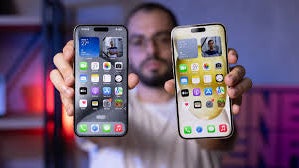Apple’s Quest for Total Control: What It Means for iPhone and Other Devices

Apple is working on designing more components for its iPhone in-house. The company wants to have more control over production and stop relying on its direct rivals like Samsung and Qualcomm for certain parts.
One of the major projects Apple is working on is designing its own 5G modem chip to replace Qualcomm’s Snapdragon modem. Apple originally hoped to have this ready for the iPhone 15, but it is facing delays.
Apple is also working on designing a combined Wi-Fi and Bluetooth chip to replace components currently purchased from Broadcom. This component was initially planned for the iPhone 17 in 2025, but it is also facing delays.
Another significant project for Apple is the development of micro-LED displays. The company has spent over $1 billion on this technology and hopes to integrate it into the Apple Watch. The displays can be integrated with sensors, making them perfect for adding health-related features to the device.
Apple is also considering designing its own camera sensors to add value to the iPhone’s photography system. The company is also working on a non-invasive blood glucose monitor for the Apple Watch, which could benefit insulin-dependent diabetics.
While Apple is focusing on designing these components, it will still need manufacturing partners. Similar to how it designs the A-series application processor for the iPhone but relies on TSMC for manufacturing, Apple will need partners to manufacture the components it designs.
Overall, Apple’s mission is to have more control over the components used in its devices, and by designing its own components, it can add certain features that it can’t when buying off-the-shelf parts.
